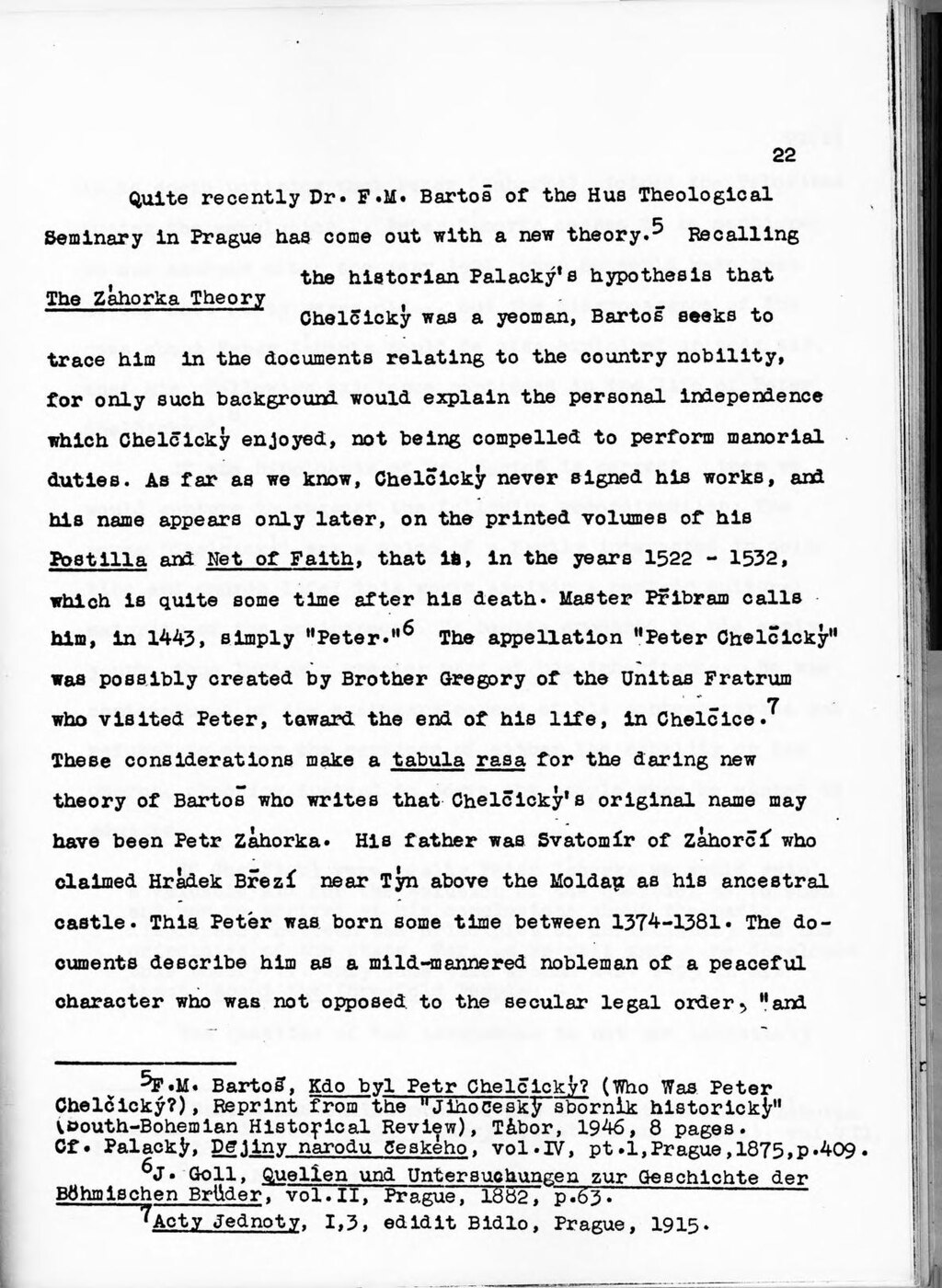22
Quite recently Dr. F.M. Bartos of the Hus Theological Seminary in Prague has come out with a new theory.5 The Za̍horka Theory Recalling the historian Palacký's hypothesis that Chelc̄icky̍ was a yeoman, Bartos̄ seeks to trace him in the documents relating to the country nobility, for only such background would explain the personal independence which Chelc̄icky̍ enjoyed, not being compelled to perform manorial duties. As far as we know, Chelc̄icky̍ never signed his works, and his name appears only later, on the printed volumes of his Postilla and Net of Faith, that is, in the years 1522 – 1532, which is quite some time after his death. Master Pr̄ibram calls him, in 1443, simply "Peter."6 The appellation "Peter Chelc̄icky̍" was possibly created by Brother Gregory of the Unitas Fratrum who visited Peter, toward the end of his life, in Chelc̄ice.7 These considerations make a tabula rasa for the daring new theory of Bartos̄ who writes that Chelc̄icky̍'s original name may have been Petr Za̍horka. His father was Svatomír of Za̍horc̄í who claimed Hra̍dek Br̄ezí near Ty̍n above the Moldau as his ancestral castle. This Peter was born some time between 1374–1381. The documents describe him as a mild-mannered nobleman of a peaceful character who was not opposed to the secular legal order, "and
5 F.M. Bartos̄, Kdo byl Petr Chelc̄icky̍? (Who Was Peter Chelčický?), Reprint from the "Jihočesky̍ sborni̍k historicky̍" (South-Bohemian Historical Review), Ta̍bor, 1946, 8 pages. Cf. Palacky̍, Dējiny na̍rodu c̄eske̍ho, vol.IV, pt.1, Prague, 1875, p.409.
6 J. Goll, Quellen und Untersuchungen zur Geschichte der Böhmischen Brüder, vol.II, Prague, 1882, p.63.
7 Acty Jednoty, I,3, edidit Bidlo, Prague, 1915.
